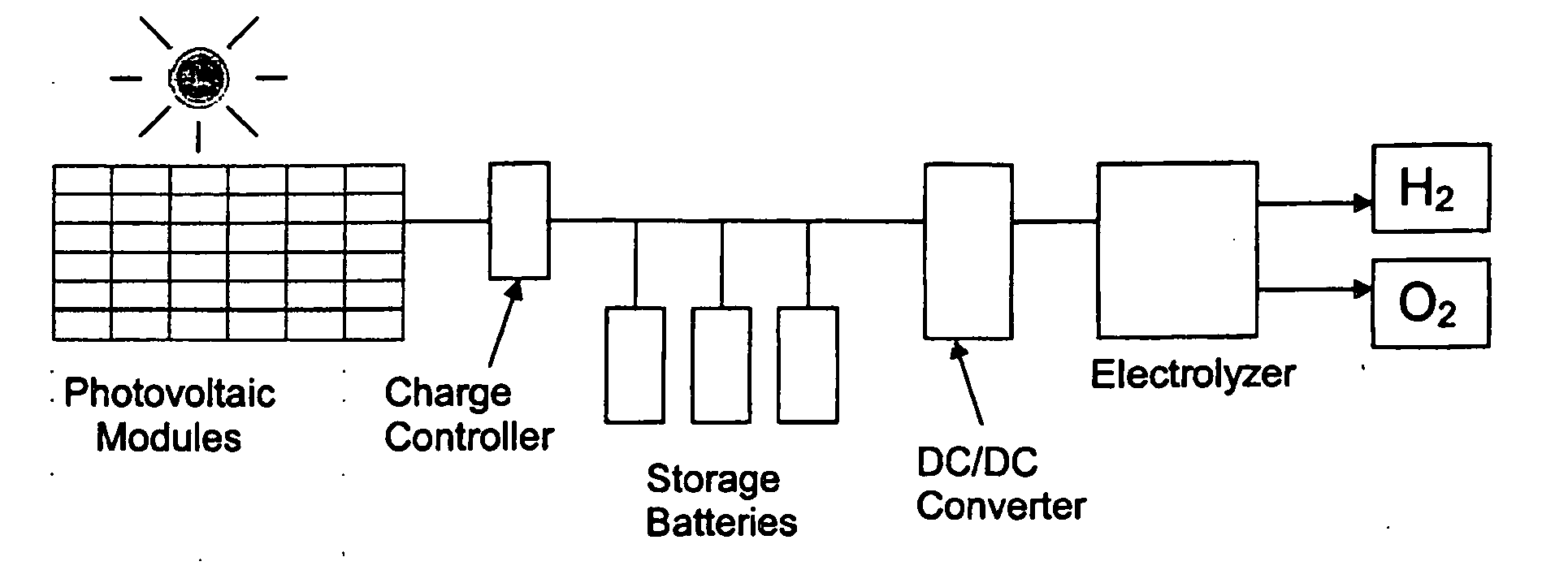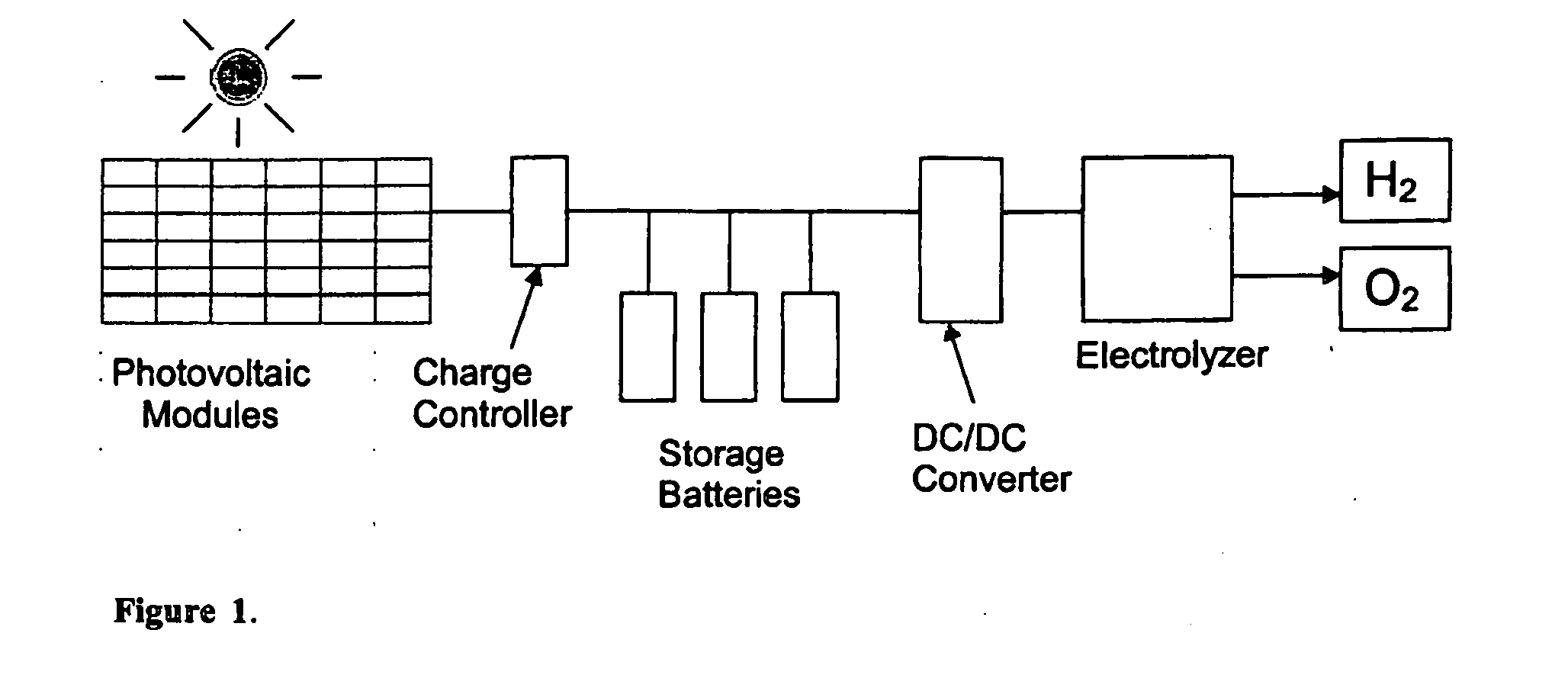Method and apparatus for hydrogen generation
- Summary
- Abstract
- Description
- Claims
- Application Information
AI Technical Summary
Benefits of technology
Problems solved by technology
Method used
Image
Examples
Embodiment Construction
[0026] The system provides a practical, non-polluting technology for producing hydrogen fuel using photovoltaic semiconductor materials, an electrolyzer, and sunlight, to power fuel cell vehicles and stationary power generation at a cost competitive with other energy sources.
[0027] The system, which according to the teachings of the present invention, provides a more efficient solar powered PV-electrolysis system for hydrogen generation, was designed by systematically integrating the photovoltaic circuit and the electrolysis system and optimizing their efficiencies. The optimization process increased the conversion of solar energy to hydrogen fuel energy (the system efficiency) from about 2-6% estimated for prior art PV panel and electrolyzer systems to 7.2% for an optimized integrated system constructed using the same PV materials (crystalline or amorphous silicon). The PV circuit, PV voltage, electrode materials, electrode size, and electrolyte were all integrated and optimized t...
PUM
| Property | Measurement | Unit |
|---|---|---|
| Molar density | aaaaa | aaaaa |
| Electric potential / voltage | aaaaa | aaaaa |
| Electric potential / voltage | aaaaa | aaaaa |
Abstract
Description
Claims
Application Information
 Login to View More
Login to View More - R&D
- Intellectual Property
- Life Sciences
- Materials
- Tech Scout
- Unparalleled Data Quality
- Higher Quality Content
- 60% Fewer Hallucinations
Browse by: Latest US Patents, China's latest patents, Technical Efficacy Thesaurus, Application Domain, Technology Topic, Popular Technical Reports.
© 2025 PatSnap. All rights reserved.Legal|Privacy policy|Modern Slavery Act Transparency Statement|Sitemap|About US| Contact US: help@patsnap.com



